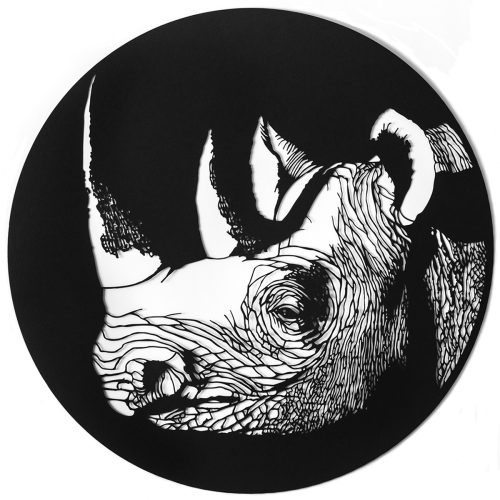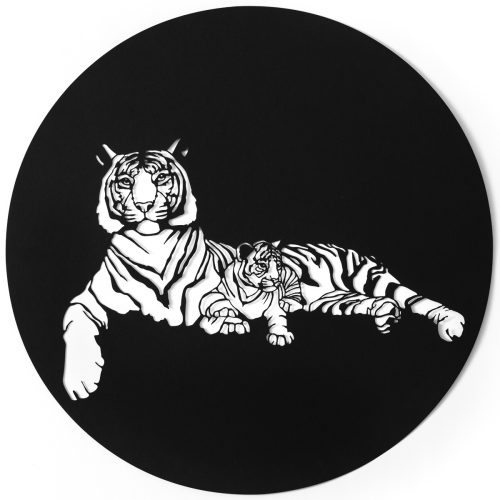Shira
Glezerman
Shira Glezerman (b. 1975, Israel) is an artist based in Israel who works in the media of drawing and paper cutting. Her works observe natural and urban landscapes as a reflection of historical, social, and mental processes.
Glezerman, who studied at the Jerusalem Studio School, holds a BFA from the Bezalel Academy of Arts and Design and an MA from the Interdisciplinary Program in the Arts at Tel Aviv University. She was the recipient of the 2013 Rosenblum Prize for Israeli Art.
Her work has been shown in various solo and group exhibitions, including at the Ramat Gan Museum, Anu Museum, Haifa Museum, the Jerusalem Artist’s House, the Rosenfeld Gallery, and more. Her work is represented in both public and private collections worldwide, including in the Israel Museum Collection, the Haifa Museum Collection, and the Shiff Collection.
After years of working in oil painting and paper cutting, I’ve recently focused primarily on monochromatic pencil drawing. Concentrating on tonality, without being distracted by light and dark values, allows me to direct my attention on the image and crystalize an idea. The eraser is also an integral tool, used not only to correct, but as a drawing device in itself. The lion’s share of my work process is done through subtraction and removal of graphite from covered areas – this reversal is often reflected in the choice to draw with white pencil on black paper. In my work, I portray urban landscapes as a reflection of historical, social and mental processes. Tel Aviv, where I live and work, is currently undergoing an accelerated process of demolition and rebuilding. Old buildings, bearing distinct characteristics rooted in local architecture and history, are being replaced by functional, almost identical high-rises. The rapid, brutal changes in the atmosphere and appearance of the city’s streets creates disorientation and transforms the social fabric, as the former tenants of the demolished houses are replaced by new, wealthier residents. Through drawings alluding to literature, myths, and fables, I document the city’s metamorphosis: vacant buildings, with gaping balconies silently glistening under the blazing sun, like bleached skulls in a Gold Rush era ghost town. Piles of construction waste rise like iron and stone mountains while the tractors, like prehistoric carnivores, rest on their summits. The yards left behind erupt into wild jungles, extending branches in every direction. Obscured by the shadows of the thicket, absent from the visual representation but present in its essence, lies the threat of the unknown. On October 7th, my previous concepts and concerns about urban sociology were abruptly replaced by questions about home, homeland, identity, and security, charged with historical and collective fears. On that day, I lost my dear, elderly aunt Hannah’le, one of the founders of Kibbutz Be’eri, the beloved kibbutz where I spent many happy summers and which has been brutally ravaged and destroyed. In the wake of October 7th, I stopped drawing Tel Aviv, and instead began depicting the landscapes of the collective and my personal disaster. Visually, and in some ways also thematically, there is a direct connection between my drawings before and after October 7th. The drawings of ruins and fauna gone wild became a depiction of the soul and the hidden threat lurking in the depth of the thicket – a doomsday prophecy come true.
Shira Glezerman (b. 1975, Israel) is an artist based in Israel who works in the media of drawing and paper cutting. Her works observe natural and urban landscapes as a reflection of historical, social, and mental processes.
Glezerman, who studied at the Jerusalem Studio School, holds a BFA from the Bezalel Academy of Arts and Design and an MA from the Interdisciplinary Program in the Arts at Tel Aviv University. She was the recipient of the 2013 Rosenblum Prize for Israeli Art.
Her work has been shown in various solo and group exhibitions, including at the Ramat Gan Museum, Anu Museum, Haifa Museum, the Jerusalem Artist’s House, the Rosenfeld Gallery, and more. Her work is represented in both public and private collections worldwide, including in the Israel Museum Collection, the Haifa Museum Collection, and the Shiff Collection.


